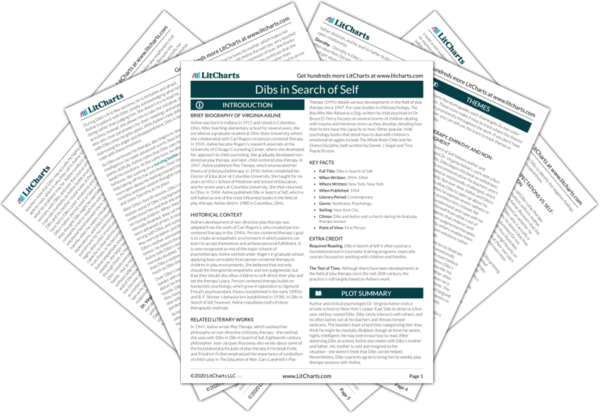Dibs’s dance as the wind illustrates his newfound freedom of expression and his increasing social skills. This relates back to the story of the wind that he told in Chapter 9. In contrast to the tree, which was lonely and sad, the wind was able to travel anywhere it wanted. Dibs now identifies with that sense of freedom, and he uses that freedom to relate more to the other children. Axline hopes to continue to foster Dibs’s freedom by helping bring out more of his negative emotions and mitigating them.
